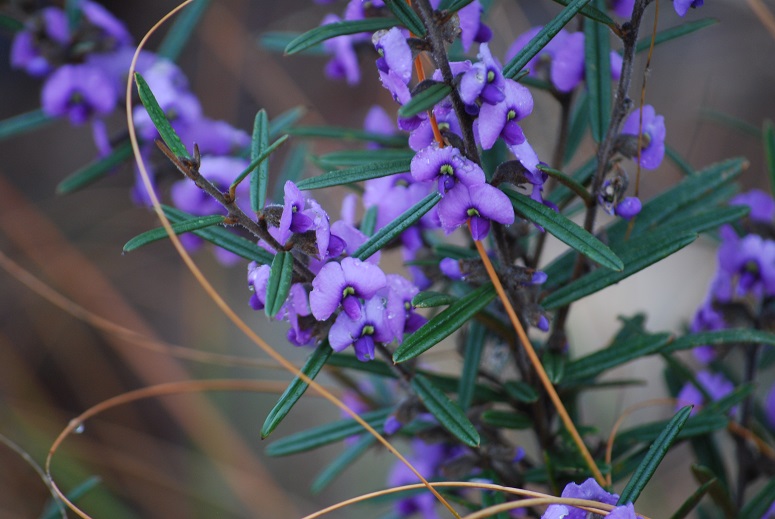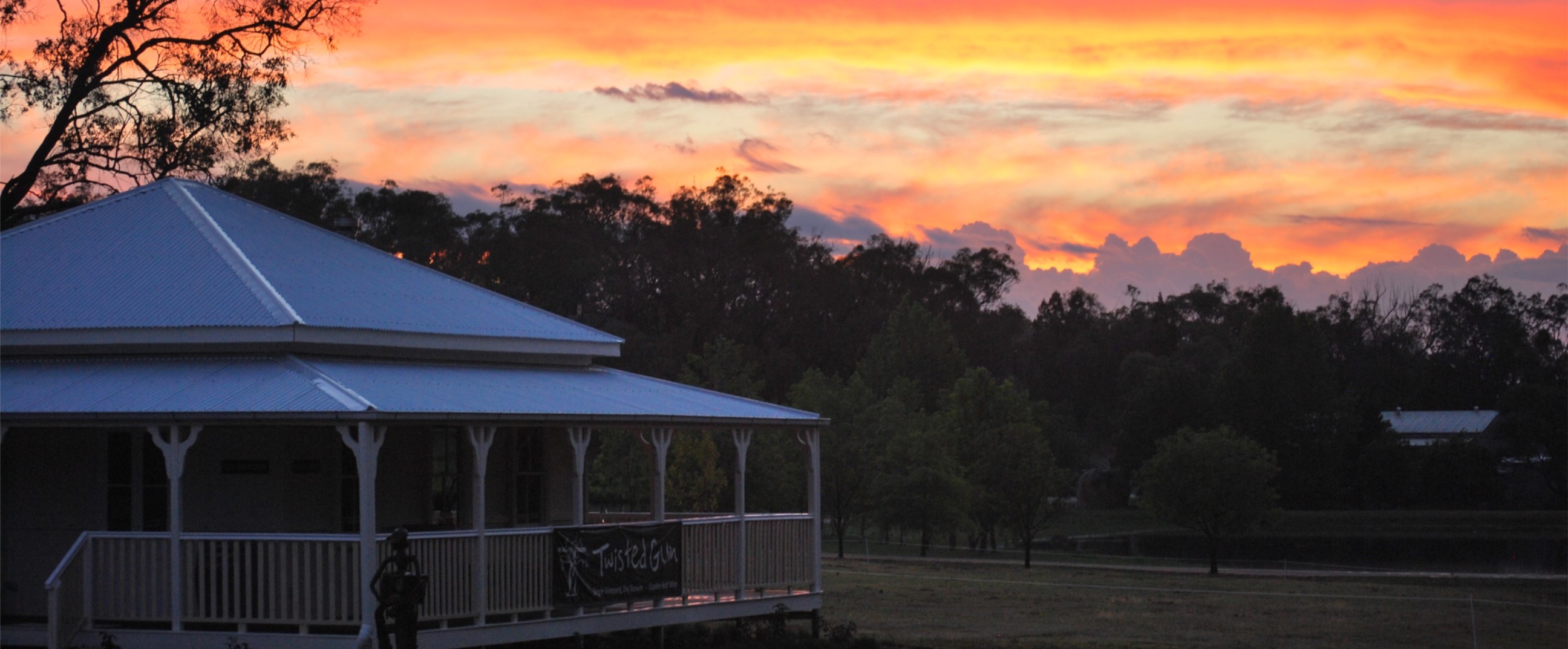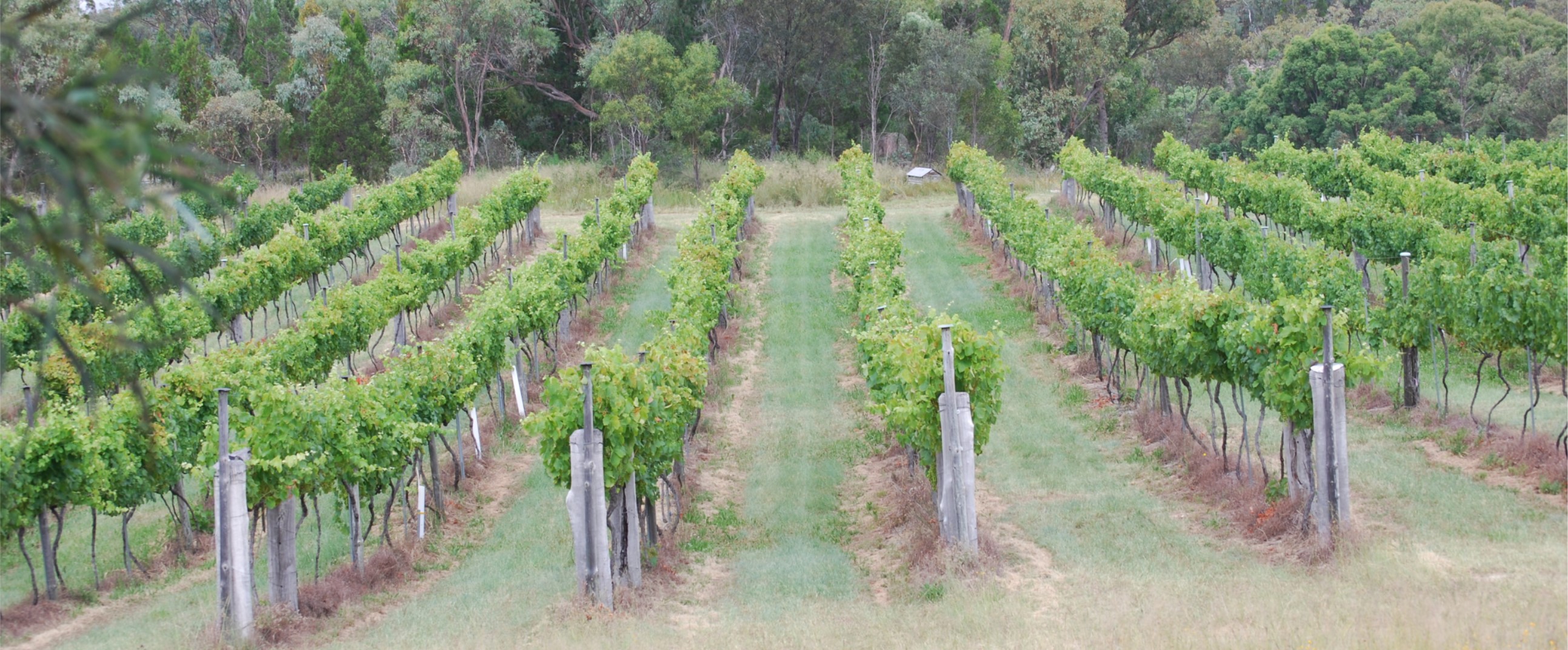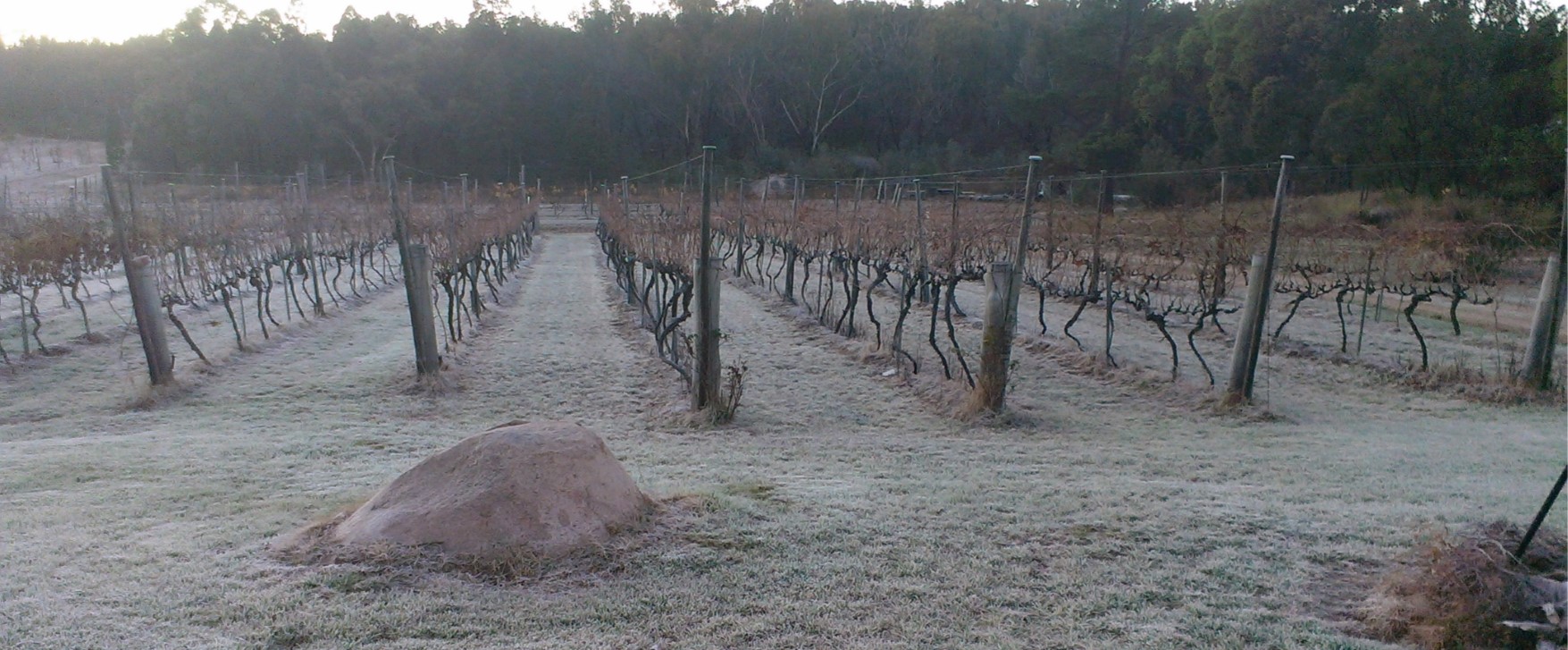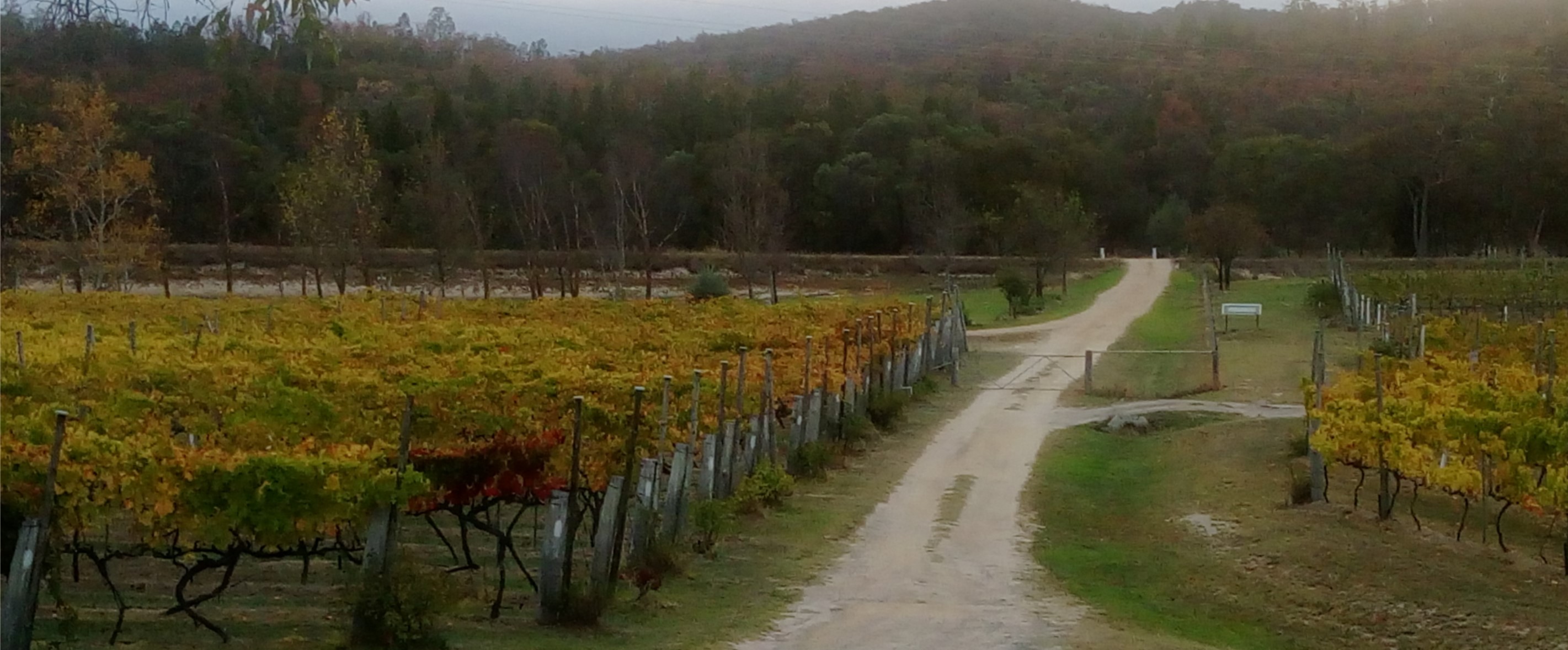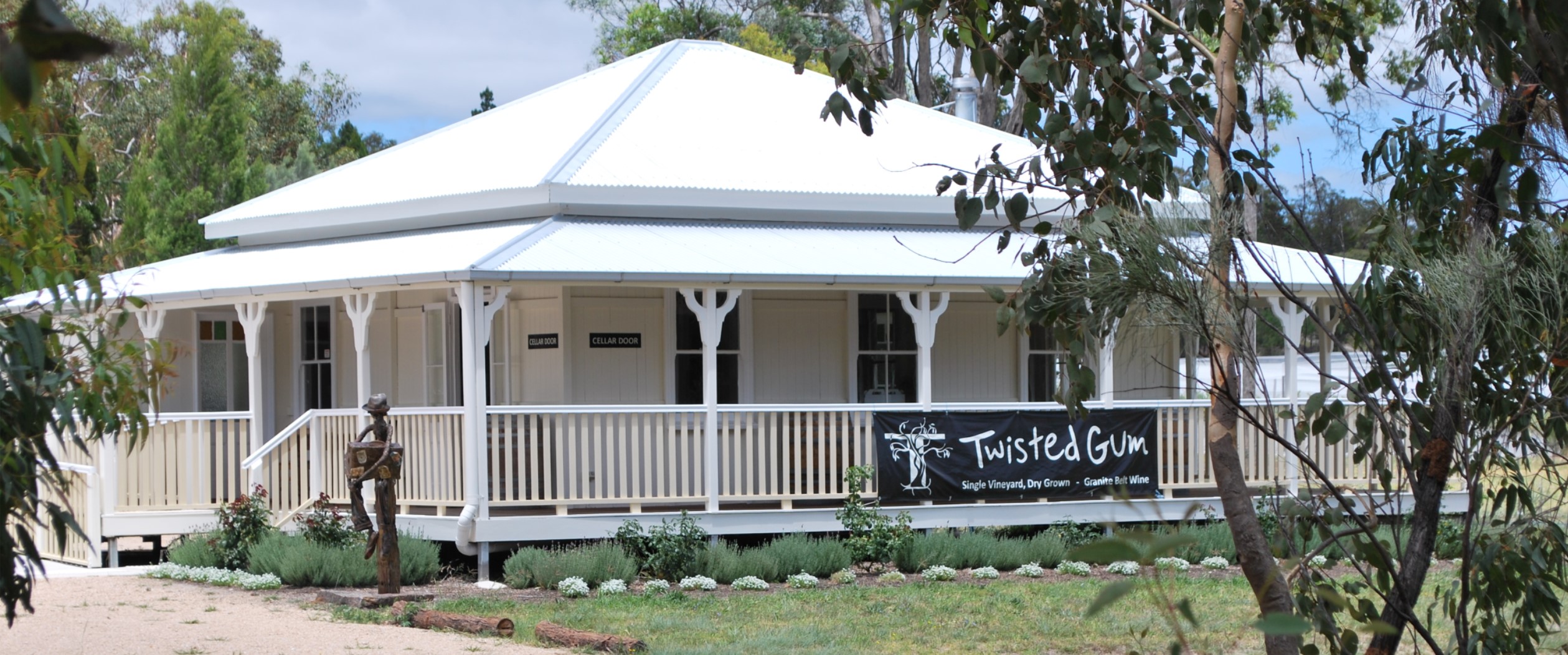In our vineyard:
- We have a healthy living soil where natural processes produce many of the nutrients needed to sustain the vines.
- Our mid rows contain a permanent sward of diverse grasses and legumes which provide habitat to encourage beneficial insects and also help produce ideal conditions for an active soil micro biology.
- We have a small flock of dorper sheep that provide nutrient cycling.
- Our vineyard blocks are small and are surrounded by native bush which provides excellent habitat for beneficial insects, birds, reptiles, etc.
- We have never applied chemical insecticides.
- We have never ploughed our soil.
- We stopped spreading organic fertilizers on our vineyard in 2018.
- We do many tasks by hand, including pruning, shoot thinning, leaf plucking, hedging and picking. This minimizes tractor passes to reduce soil compaction which improves water infiltration.
- We only apply a small amount of drip irrigation water in only a small number of years when there is a critical need.
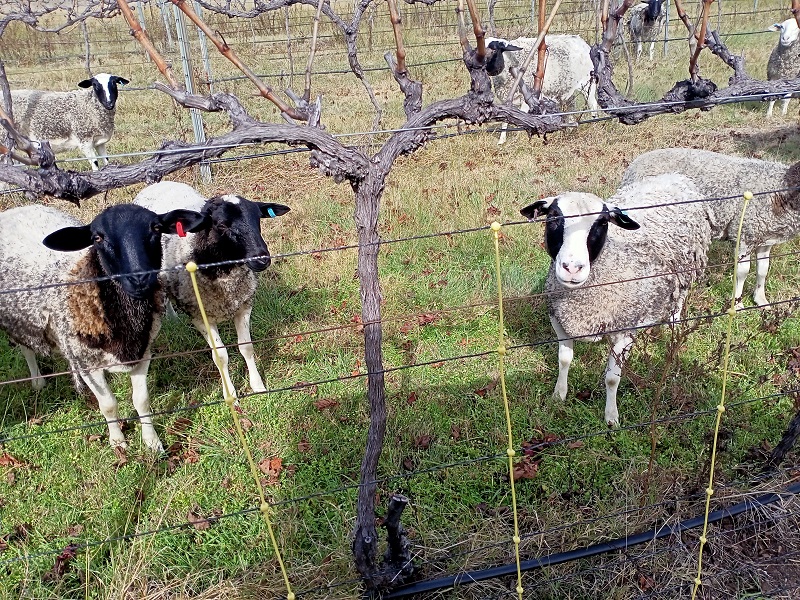
Our path towards a regenerative system has been a gradual one over the past 17 years.
In 2007 we purchased an old run down vineyard where a quarter of the vines were either dead or rootstock regrowth and the vines were choked with tall love grass weeds as high as the cordon in many places.
In the first year our plan was to try to save the remainder of the vines from dying. So we used brush cutters to cut down the massive love grass clumps and we then killed them with herbicide and we banded an NPK chemical fertilizer beside the vines.
In the following year we spread a thick layer of mulch under the vines - approx 200 cubic metres of aged forest mulch per hectare - which is lot of mulch! This was done to suppress new weed growth and improve soil moisture retention and improve the soil carbon levels.
We also banded aged feedlot manure under the mulch (8 tonnes per hectare) to reduce the risk of nitrogen drawdown by the woody mulch.
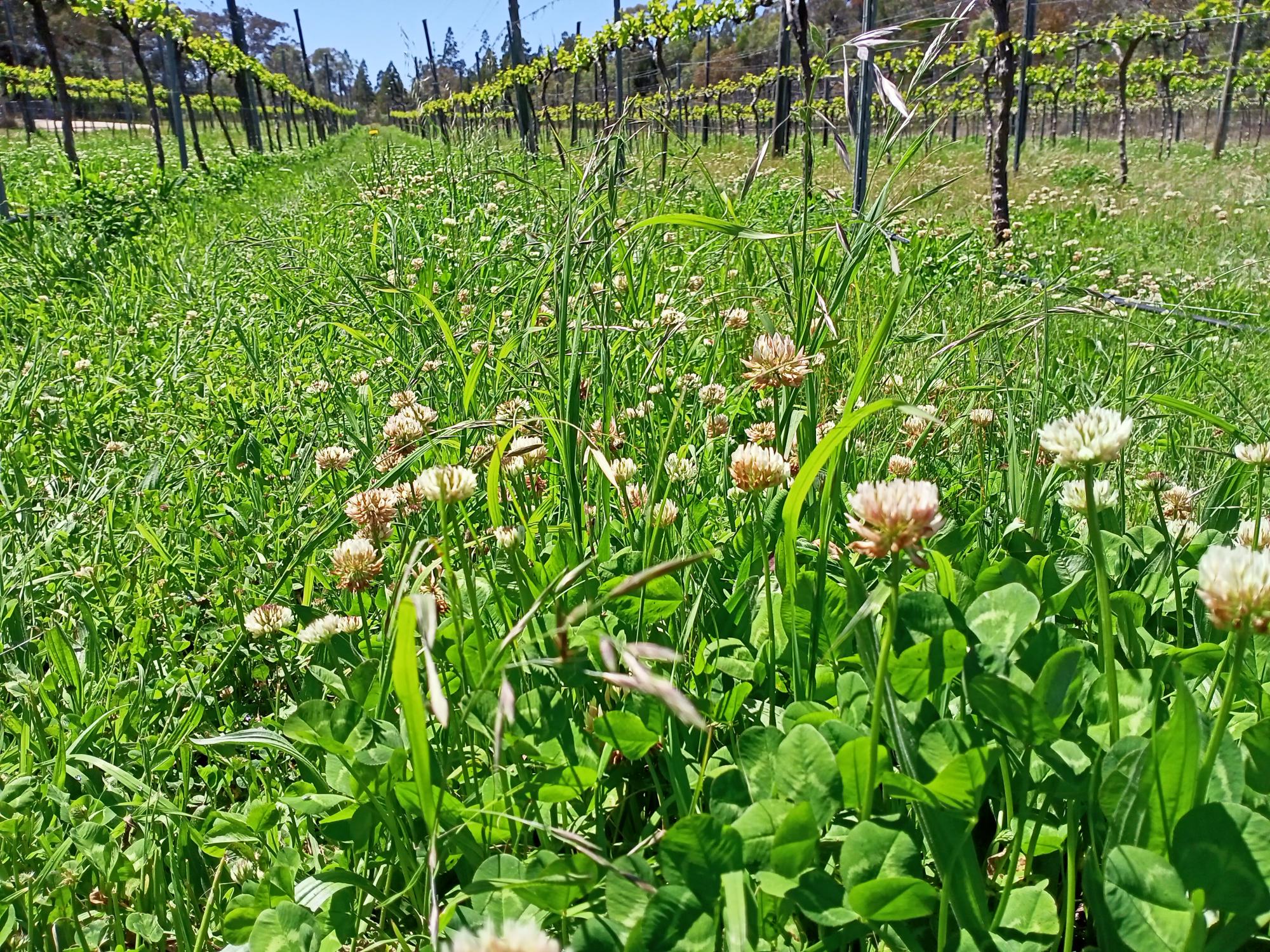
In 2018 we spread our most recent batch of organic booster chicken manure pellets in the mid rows. We have since had 6 seasons where we have not broadcast any fertilizer and instead relied upon the "regenerative" nature of our mixed pasture system, combined with regular mowing in summer and sheep grazing in winter, to supply the nutritional needs of our vines.
2019 and 2020 were severe drought years, but since then our grape yields have been well above average and the fruit quality has been excellent throughout 2021-2024. We are continuing to monitor soil quality on a regular basis and currently have no plans to broadcast any additional fertilizer in the near future.
In the early years we had regularly used herbicide to spot spray small patches of difficult weeds under vine. But we have now greatly reduced this as well, with only one small targeted spot spray use of organic herbicide in the past 6 years.
Our use of minimal irrigation and spur pruning combined with vertical shoot positioning (VSP) produces a nice open vine canopy, allowing sunlight and breezes to penetrate which greatly reduces fungal diseases in the vines. This allows us to use smaller amounts of fungicide sprays that are carefully selected to minimize any effects on beneficial insects.
It should also be noted that we have 3 hectares of vineyard on our property and more than 30 hectares of native forest and bush. The bush contains a wide variety of trees, shrubs and wildflowers, which provide food and harbour for many beneficial insects, reptiles and birds.
For additional information on Regenerative Viticulture please see the website of the newly formed international Regenerative Viticulture Foundation: www.regenerativeviticulture.org
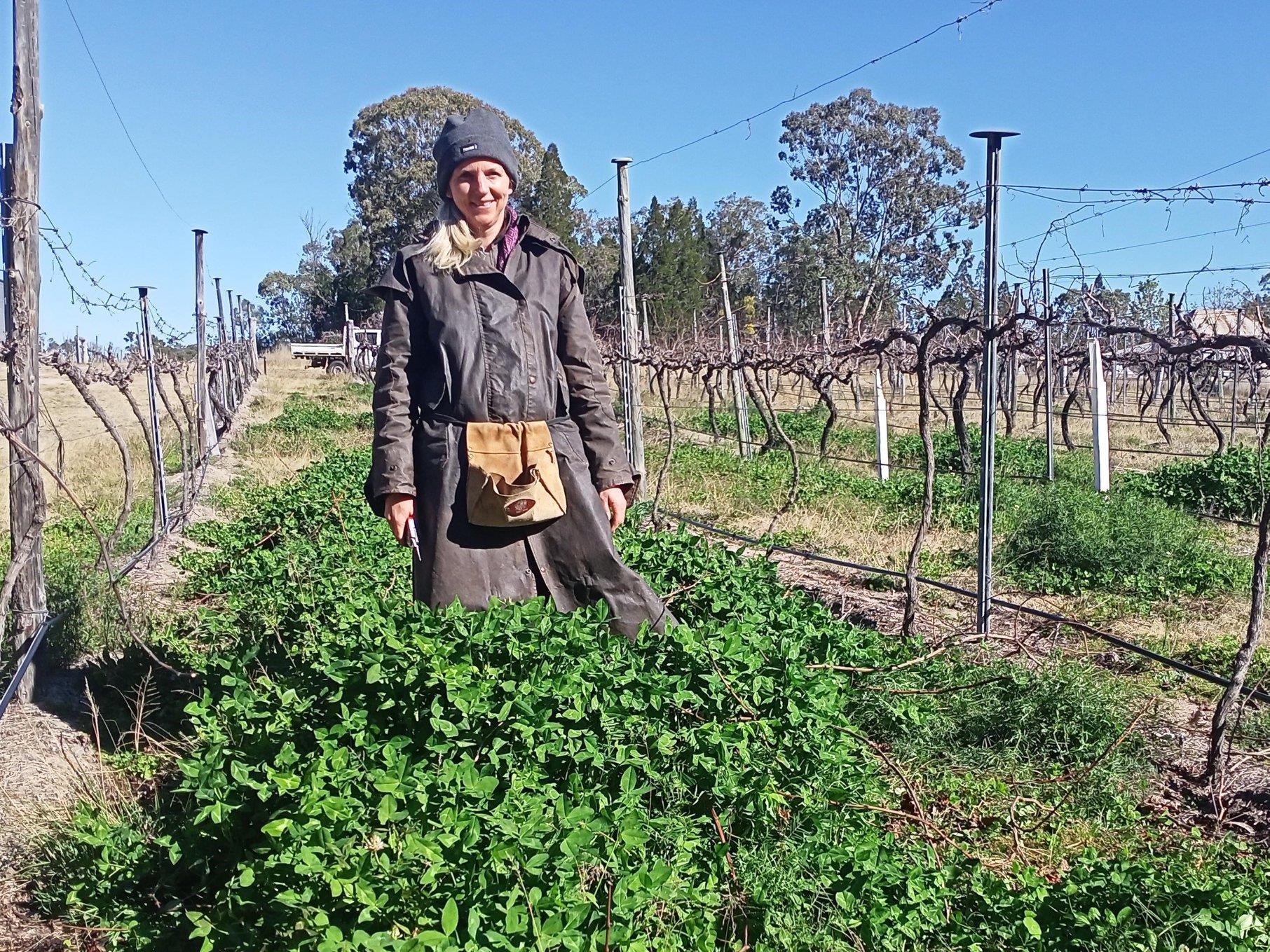
Essentially a Regenerative Agricultural System is one that uses minimal external inputs and instead aims to use natural processes to generate the nutrients and pest control services internal to the system. It relies crucially on a healthy living soil and a diversity of flora and fauna.
It is a very different approach to a modern agricultural system, where often ploughing or herbicides are used to control "weeds" (unwanted plants) and insecticides are used to control pests and then chemical fertilizers are applied to an essentially lifeless soil to provide nutrients for the target crop.
Over the past 17 years we have sought to transition our vineyard from a modern approach to a regenerative approach. However, until recently we did not know that our approach actually had this name! We had called our approach "minimal input" for many years, until we recently were told that our approach was "regenerative".
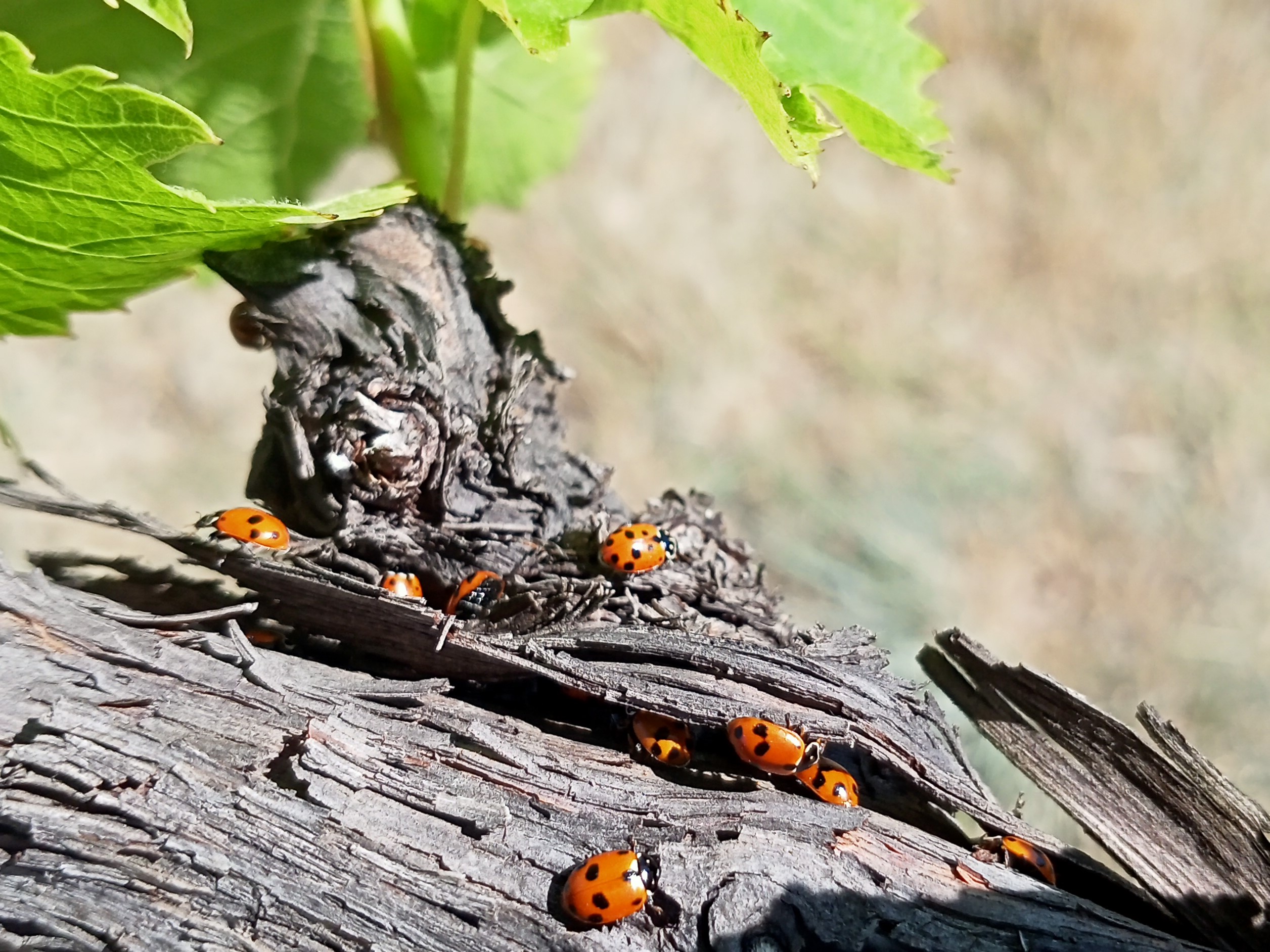
Following these early years of banding chemical NPK fertilizer along side the vine rows we then shifted to spreading organic chicken manure pellets in the midrow to encourage pasture growth.
We also sought to increase the legume content of the midrow by spreading clover seeds and in more recent years introducing new hard-seeded legumes including French Serradella and Casbah Biserrula.
In the early years we also had 2 horses that we would use to graze the midrows in winter to reduce under vine plant growth and cycle nutrients. However in 2020 we decided to introduce a small flock of dorper sheep. They do a much better job of happily eating a range of plants and also have much smaller manure pellets which naturally spread better throughout the vineyard blocks.
In 2015 we spread our 2nd batch of aged forest mulch under vine. Again 200 cubic metres of mulch per hectare with 8 tonnes of aged feedlot manure banded underneath. However, following the introduction of the sheep in 2020 (who love to dig in the mulch for a warm resting place) we have since transitioned to aiming for a "green mulch" under vine of low growing legumes and grasses. This has been very successful in some blocks but more challenging in others - depending on the existing range of plant species in each block.
